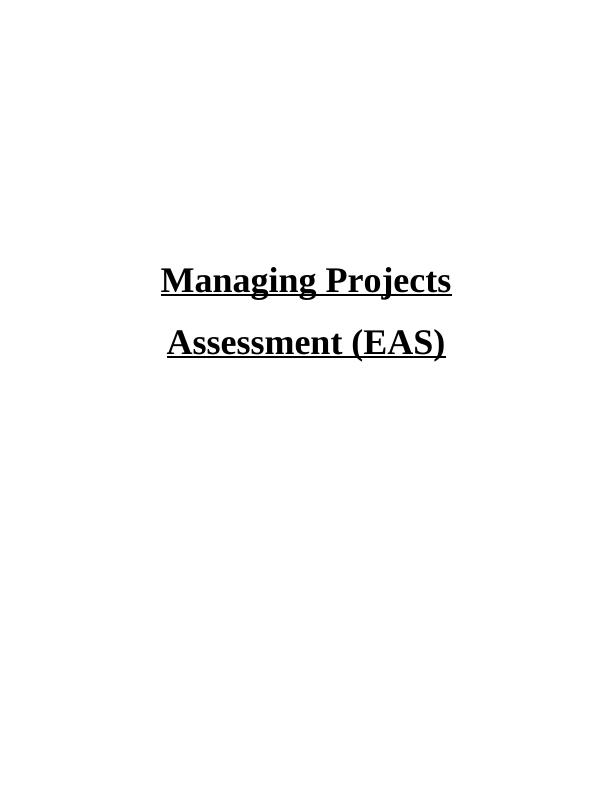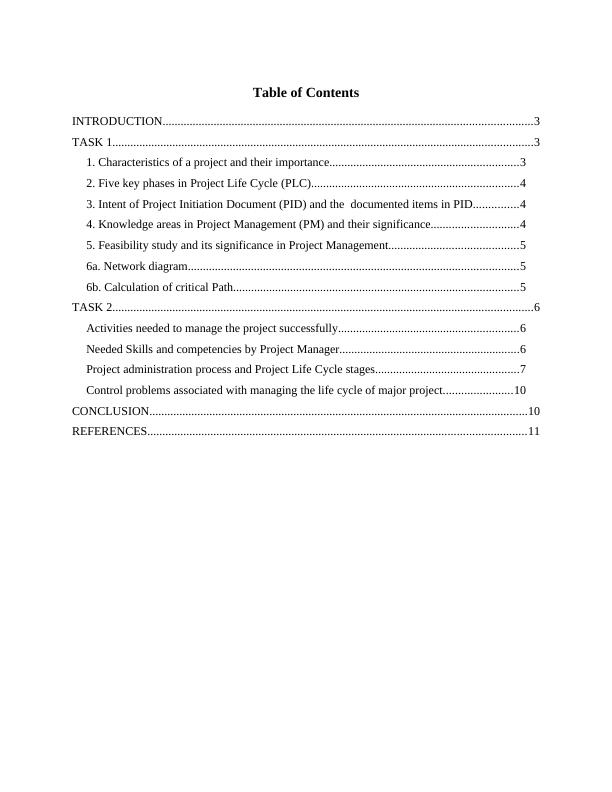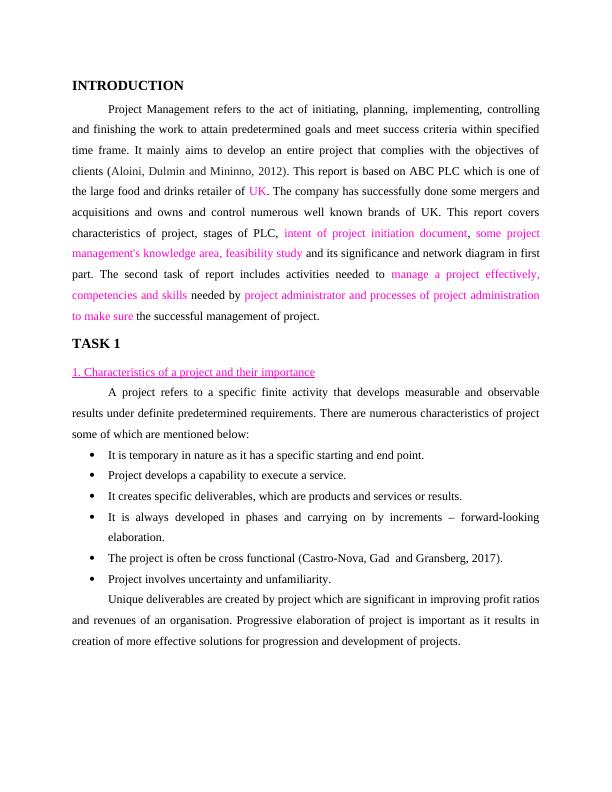Managing Projects Assessment (EAS)
This assignment aims to assess students' knowledge and skills in project planning and control by analyzing different approaches and their benefits and limitations in a given case.
12 Pages3815 Words39 Views
Added on 2023-01-18
About This Document
hi, \n\nplease see attached file whit the brief \n\nthank you
Managing Projects Assessment (EAS)
This assignment aims to assess students' knowledge and skills in project planning and control by analyzing different approaches and their benefits and limitations in a given case.
Added on 2023-01-18
ShareRelated Documents
End of preview
Want to access all the pages? Upload your documents or become a member.
Managing Projects: Characteristics, Stakeholder Analysis, Project Initiation Document, Feasibility Study, Knowledge Areas, Project Manager Attributes, Benefits of Network Diagram
|13
|4136
|79
Managing Projects: Assessment Questions, Case Study, and Stakeholder Analysis
|31
|5244
|42
During the completion phase of the project
|7
|1325
|23
Diploma of Project Management BSBPMG521 Manage Project
|11
|2865
|22
Managing Project: Characteristics, Stages, and Importance of Feasibility Study
|15
|3834
|85
Managing Projects Assignment (Doc)
|18
|4261
|430




